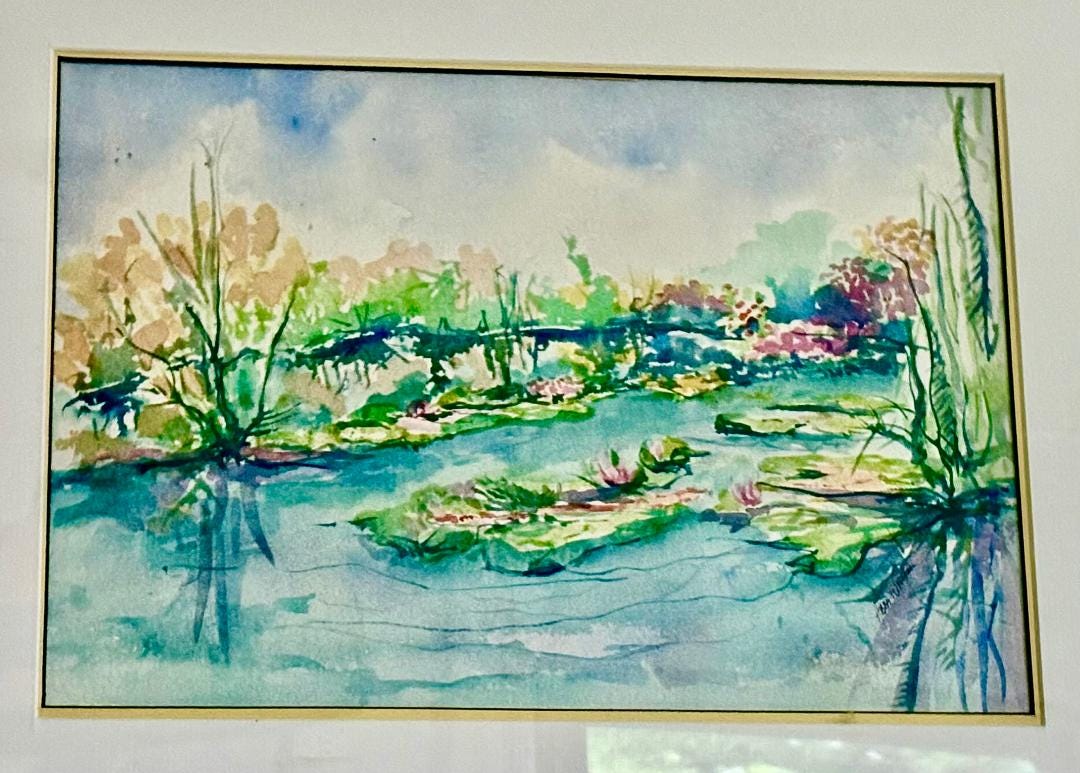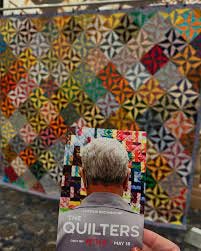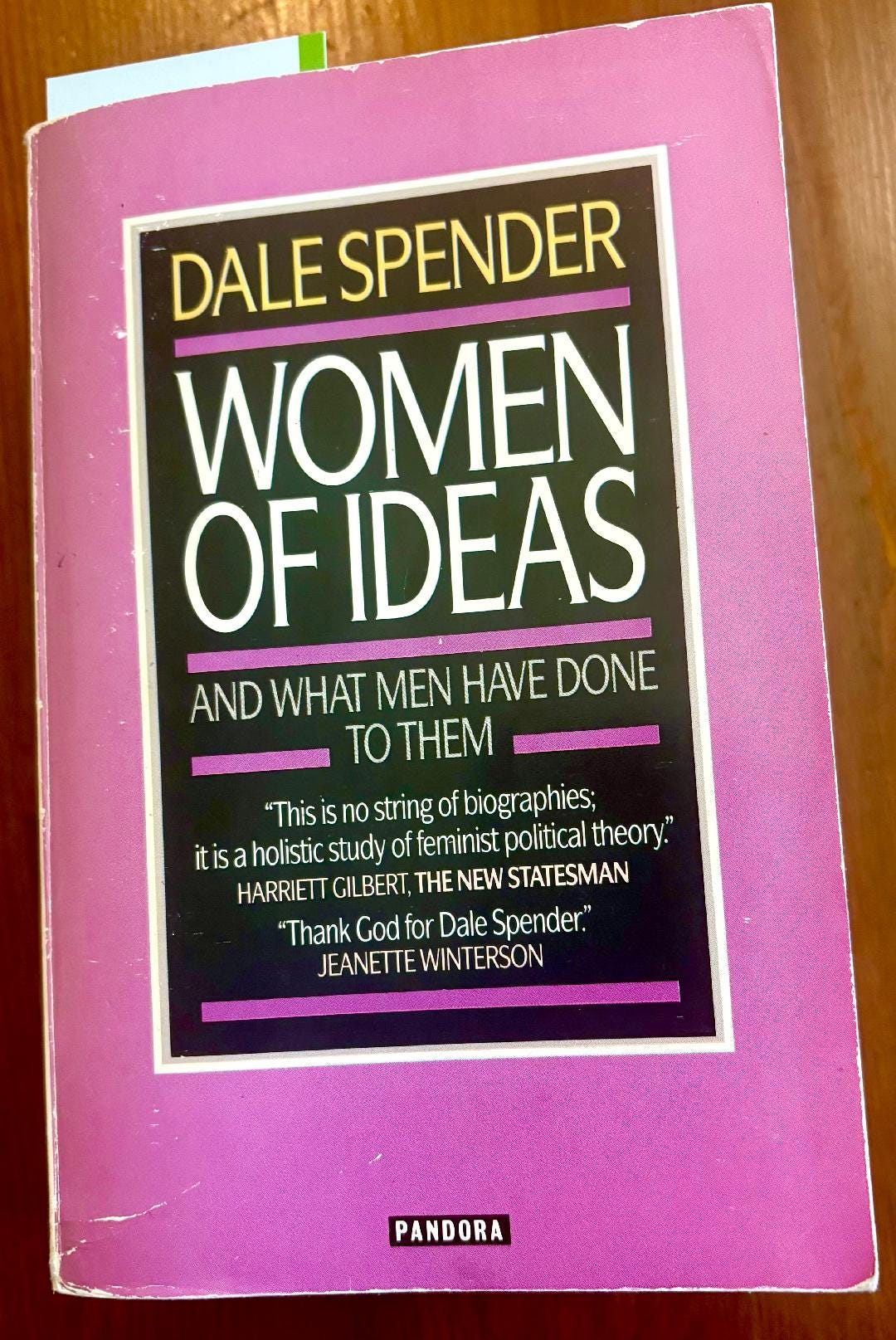QUIDDITY, 83
It Became More than That, Meanderings, and Hypatia's Bookroom
It Became More than That
From the time she was 15 until her passing in 2018, writing was an ever-present influencer in Leah Napolin’s life. Writing provided her with the platform to observe and comment on the events and people that were consequential in her world, - from the minute to the universal, from YENTL to THE DOGS OF PRYPIAT. Future issues of QUIDDITY will provide you with the opportunity to become familiar with some of her insights. **********
On a day that was loose-ended, Leah remembered a friend’s recommendation of a film that was only being shown at a venue we had never visited. (The North Shore Towers are probably the tallest buildings on Long Island, at about 350+ feet.) Our curiosity led to an experience that became the topic of conversation on many occasions. Leah wrote about it. For me, it could have been the setting for a Stephen King or Ray Bradbury novel.
AND A COLD WIND WAS BLOWING or DAY OF THE LIVING DEAD
By Leah Napolin
PART 1…
I’d never walked out of a movie before, although I do remember walking out on a couple of stage plays: one, where I waited on the sidewalk in front of the off-Broadway venue where it was playing, wishing I had a cigarette to pass the time, though I’d given up smoking years ago. Eventually my companion came out and joined me, having soldiered through to the end of Act Three. The other was a play at The Manhattan Theatre Club, in the basement of City Center. At intermission, when the audience clapped, I booed, but my boos got drowned out by the applause. Just as well. Who boos anymore, except at hockey games and boxing matches? Making my escape, I stood in line for the elevator, then ascended slowly with a bunch of fellow playgoers. I was still seething. I turned to my captive audience and said, “Did anyone else besides me think that play sucked?” No response. People either didn’t agree, didn’t care, or were too embarrassed to reply. We’d been four flights down, and when the elevator made its first stop, all the passengers rushed to get off (probably to get away from me), but I said, “No, this is the Mezzanine. You have to go up to Street!” So, they all sheepishly got back on.
Since those two events I’ve kept my peevishness in check while suffering through any number of entertainments that failed to enlighten or even entertain. I was doing my damndest, not merely as a patron of the arts but as an artist with only love in her heart for other artists, to pass no judgement. Until last Saturday, that is.
It was a mild day with no wind. My partner and I decided to take in a movie that neither of us was particularly keen on seeing, but we were at loose ends that weekend and at least it was something to do. The movie was playing at just one theater in our vicinity—the North Shore Towers Cinema in Little Neck, on the Queens-Nassau border, located inside a luxury residential complex. I’d never been there before but one of my other friends had. She’d reported not being able to find the building and then, when she did, wandering around inside not able to find the movie. “Couldn’t find the movie, huh?” I teased. She, who was never at a loss for words, lost her words. Years later, I even had a dream about it. I was in some kind of labyrinth, looking for a movie whose soundtrack I could hear in the distance. When I finally found the place, I had to climb over other seats to the single empty one, facing away from the screen. The only images I could see were shadows on the opposite wall. Could it be? Plato’s Cave!
Even though North Shore Towers was in familiar territory, we got lost looking for Marcus Avenue and drove up and down Lakeville Road in search of it. Google Maps was no help. Still, the three high-rises were easy to see for miles around—thirty-four storey colossi looming well above the surrounding towns. For many years they’d been a landmark on the horizon. Panoramic views! trumpeted the brochures. Country Club living! In fact, at its inception during the era of Studio 54, it was the hottest place to live for the Beautiful People, the Glitterati. But, how to reach it? Finally, we stumbled on what seemed like a private service road closely paralleling the parkway, and there it was.
We signed in at the gate (stamped timesheet, destination, warnings about what is and is not allowed while visiting.) Ah, so this is what a gated community is like, I thought. We parked, and, as advised by the security guard, headed to Building 2. While making our way, we were suddenly assaulted and blown back by a strong bitterly cold wind that came out of nowhere. Odd, because the sky was cloudless and the sun shining. Odd, because elsewhere, off the spacious grounds, we’d passed people strolling hatless, in shorts.
The vast gloomy, neo-fascist style marble lobby that greeted us in Building 2 was more intimidating than welcoming. We showed our Visitor’s Pass to a desk clerk who instructed us to take the elevator to the Arcade level. But, there was no elevator, at least none we could see. Leading off the lobby in all directions were hallways that cornered into dead-ends that turned back into hallways with unmarked doors looking as though they might be elevators, but weren’t. We were about to despair when along came a couple who seemed to know where they were going. We followed them to a door that looked nothing like an elevator, but was.
Once on the Arcade level with its subterranean ambiance, we found ourselves in a broad concourse with conference rooms, lecture halls, multi-media centers, spas and fitness clubs. All the floors and ceilings were marble -- the walls, too, which were austerely but tastefully decorated with framed prints: 19th century circus scenes, dancing girls, sumptuous two-dimensional floral arrangements. Two by two, elderly ladies tottered down the marble aisle or pushed their walkers, accompanied by caregivers. We passed interior windows behind which sat other ladies, perfectly coiffed, all of them elderly, in a café-like setting. I glanced at my watch. Hi-ho, tea time! Everything was immaculate, institutionally sterile, even the occasional potted plant (a Stepford plant?). But, I noticed that every so often the architect had messed with his symmetry by introducing odd angles where you least expected them, resulting in architectural features that served no practical or aesthetic purpose whatsoever other than to disorient the viewer.
We turned a corner past more interior windows revealing a large dining room, but with empty tables. Things were getting curiouser and curiouser. There must have been a nightclub, too, somewhere on the Arcade level because we saw an ad for an upcoming show by a famous Borscht Belt comedian. “Jeez, I thought he was dead,” I said.
(to be continued)
###
MEANDERINGS: “The Word ARTIST and My Apologies to Abby”
QUICK -- What comes to your mind when you hear or see the word ARTIST? For me, it’s a painter like Georgia O’Keefe standing in front of an easel with paint brush in hand or Mary Oliver sitting at a desk writing a poem. It’s not a child hitting a triangle in her kindergarten music class, nor is it the gardener planting this year’s annuals. Or, is it?
I ask this because of a memory that was reignited by a recent three-pronged experience. The first occurred the other day when I spotted a painted sign at a garage sale. On a piece of imaginatively chiseled wood, dark purple and red letters spelled out “WOOD CARVINGS by RAYMOND, ARTIST.” Years ago, I would have snidely said, “Is he serious?” Why not RAYMOND, WOODCARVER?
But, not today. I have fundamentally changed my understanding about the importance of words to both those who write or say them and to those who read or hear them. For example, the term artist.
As an illustration: Leah and I had a mutual friend who hung a painted tin sign at the entrance to her house. It read: ABBY on the first line and ARTIST on the second. Leah, a Broadway produced playwright, and me, a teacher and published textbook author, sarcastically snickered, “Oh, sure she is. According to whom?” Thus began a prolonged discussion about what exactly is an artist, and does the creator have the right to call herself an artist. Both of us eventually agreed, then, that the term artist is one that is granted by others, not appropriated. (I wonder why Abby chose artist rather than watercolorist or painter.)
And, to be honest, that had been my prevailing attitude for many years. I accepted the so-called art world’s definition of art and artist -- not pretending to be an elite critic, but rather being a participant needing a foundation to steady her insecure footing in the world of art. (Psst…perhaps there was a smattering of my wanting to be seen as better than…)
The second prong was my watching a short documentary titled The Quilters about a small group of male, maximum security prisoners who formed a voluntary group that creates/constructs breathtaking quilts for local children and people with disabilities. Are these men quilters, craftsmen, artisans, artists? To whom does it matter? And, does it really matter that they be placed in a specific category?
The third prong reaffirmed why and how my perception has changed. I read a LitHub article “What Does It Mean to Be a Writer?” that was based on an excerpt from Brian Gresko’s You Must Go On: Inspirations on Writing & Creativity. And – it touched a nerve.
Gresko quotes the legendary musician Brian Eno: “being an artist is not about your output, your product, but it’s about a philosophy, a way of approaching life. To attune closely, noticing the world and yourself in it, to be open to new ideas and exploration, to be willing to be challenged in your thinking and moved to change, to want to actualize the desire to squawk back to the art you love, to participate, to collaborate with other creatives.”
For Gresko, “art is a form of play, and fun and self-discovery.”
He continues: “You cannot tell me I’m not a writer because I have and have not done certain things. Only I have that power, and I know I’m a writer because I read and love to read and love to take ideas and stories and turns of phrase and rhythmic sentence constructions and do something with them on my own.”
The words I, create, participate, alive, passion form the basis of Gresko’s construct of the concept-artist. And, the years have allowed me to experience each of these words in the energy of creations that celebrate aliveness in all its different forms, welcoming that which we share, not that which divides us.
As a final comment, the author advises, “While external validation from others can be helpful, it's not a requirement for self-identification as an artist. You can call yourself an artist if you feel like you are, even if you don't have formal training or are just starting out.
So, as her painting graces a wall in my office, I offer apologies and say thank you to Abby, Artist. &
###
HYPATIA’S BOOKROOM
Students protesting policy changes to restrict publication of the high school newspaper and other publications, at the Alexandria (VA) School Board meeting on May 8, 2025 (ALX staff photo by James Cullum)
A New Kind of Library
“I have always imagined that Paradise will be a kind of a Library.” –Jorge Luis Borges
QUIDDITY, is building its own library of books that are of importance to us--intellectually, emotionally, spiritually, ethically, etc.-- books that we would definitely rescue from a trash pile. We’re calling it Hypatia's Bookroom after the chief librarian of the ancient library of Alexandria. Tell us the title, author, category, and why this book is important to you. Questions you might consider include: Would you read this book again? Would you gift it to someone (who, why)? What note would you write on the cover page?
On the shelves so far: The rescued books selected by readers has grown and takes up too much space to list them all here. You can peruse the entire listing by going to the blog section of my website at blmurphy.com.
"There are so very many books, and we have forgotten almost all of them." (Lit.Hub) May we save all we can.
Kafka’s ideal of what a book should be: “An ax for the frozen sea within us.” (Sigrid Nuez interview in “By the Book,” NYT Book Review, 12/10/23)
**********
Quiddity proudly broadcasts a shout-out to the students of Alexandria City High School for their successfully standing up to the Alexandria Board of Education’s attempt to initiate policy changes that would have given it censorious oversight of student publications in the city’s public schools. Another win for First Amendment rights.
******************
Shocked by the President’s Executive Order firing Carla Hayden, the Head Librarian of Congress; encouraged by participating in NWHA’s “circle;” and with thanks to Molly McGregor, I’m taking this opportunity to recommend a book that should be in the library of all who want to know more about women’s history and rights. It’s quite a tome that took some deep searches to locate. Women of Ideas and What Men Have Done To Them" (1982) by Dale Spender (1943-2023), an Australian feminist scholar, teacher, writer and consultant, is available for purchase. However, it appears to be a used book and not in new print. I found mine in a used bookstore for $9.85.
WOMEN OF IDEAS, and What Men Have Done to Them by Dale Spender
Comments often heard during several of the National Women’s History Alliance’s “consciousness circles” included “Wow, I never heard of her;” or, “She wrote that? I didn’t know.” One of the participants commented, “You should get a copy of Women of Ideas and What Men Have Done to Them by Dale Spender.” I joined the chorus in replying, “I never heard of it, or her.”
Well, now I CAN say I’ve heard of her and this feminine hagiography.
In contrast to my adult home, the single bookshelf in my childhood living room held only four books: the Douay-Rheims Holy Bible, an anthology of Readers Digest articles, a book of WWII photos, and a copy of The Lives of the Saints. It was expected that I would read about a saint identified in that book at least once a week. Our parish’s yearly calendar identified a saint for each day, and that was the one I would choose on any given day. (December 4 is Saint Barbara’s day.) By the way, I learned while prepping for my college board exams that hagiography was the sophisticated word for The Lives of the Saints. Although rarely, I began to use that term when I wanted to impress the nuns.
Today, I’m not trying to impress you. Rather, I’m hoping to encourage you to find and to place a copy of Women of Ideas and What Men Have Done To Them on your own bookshelf. There are over 135 women covered, from 1640 to 1982, and I’m embarrassed to admit to being familiar with only 32 of those names.
In her opening chapter Spender asks: “…if we do not understand the process by which hundreds of women—often influential in their own time—have been made to disappear, how can we believe that what has happened to our foremothers, will not happen to us?”
I intend to find out. My search will begin in 1640 with Mary Pix, and I will ask Dale Spender to introduce me to a new name at least a couple of times a week. I hope you will join me.








